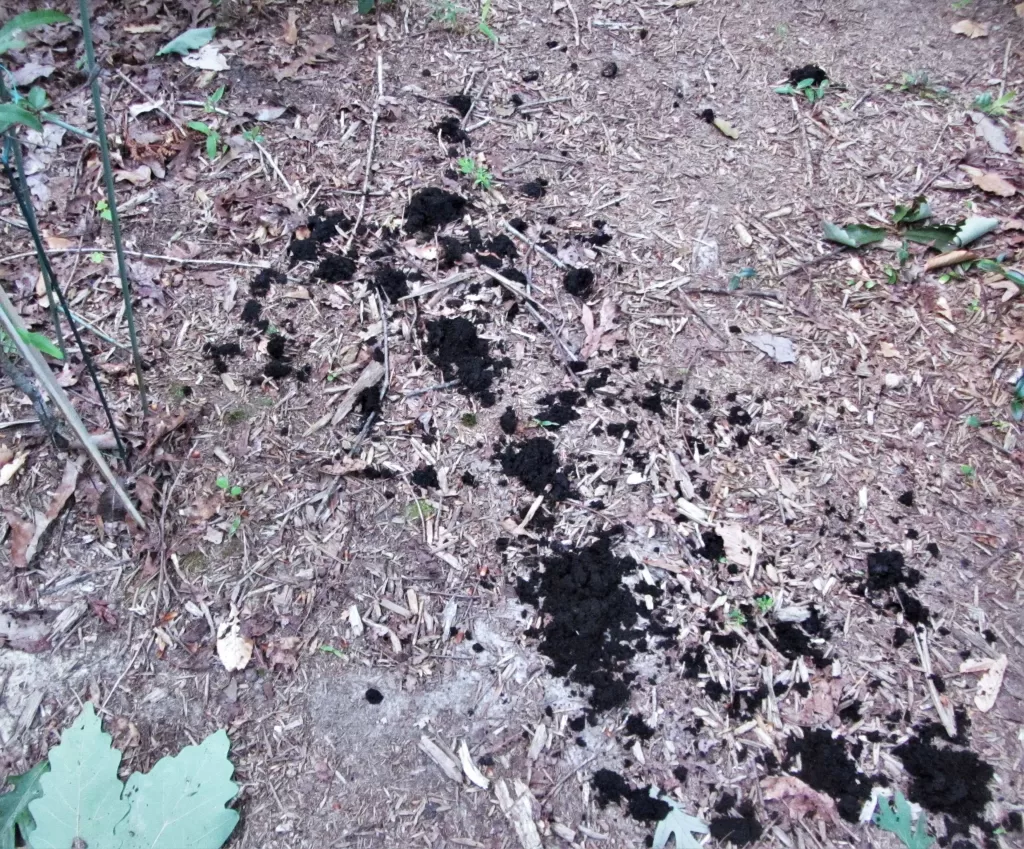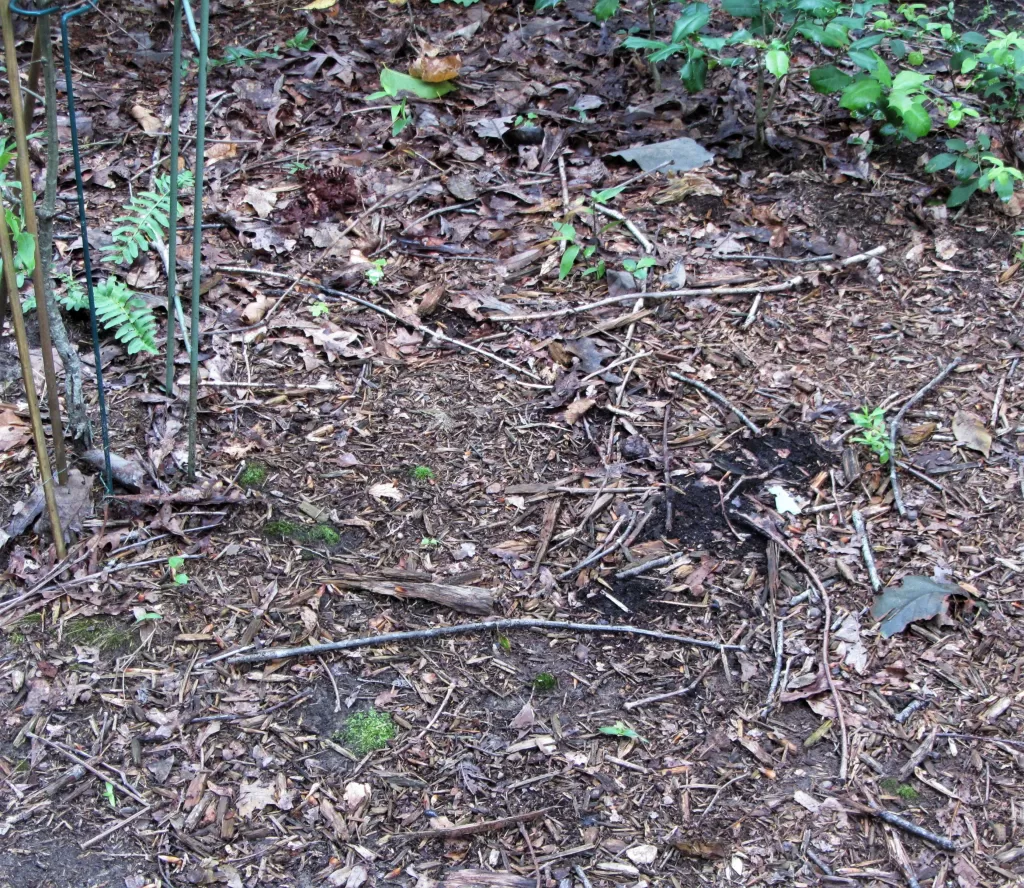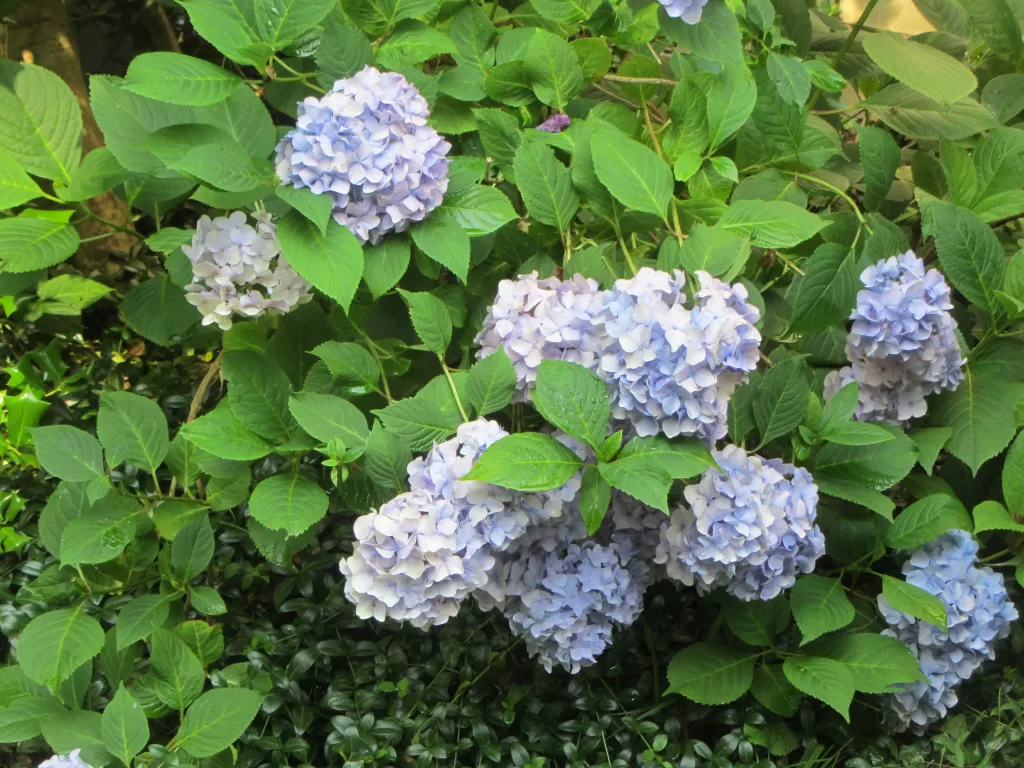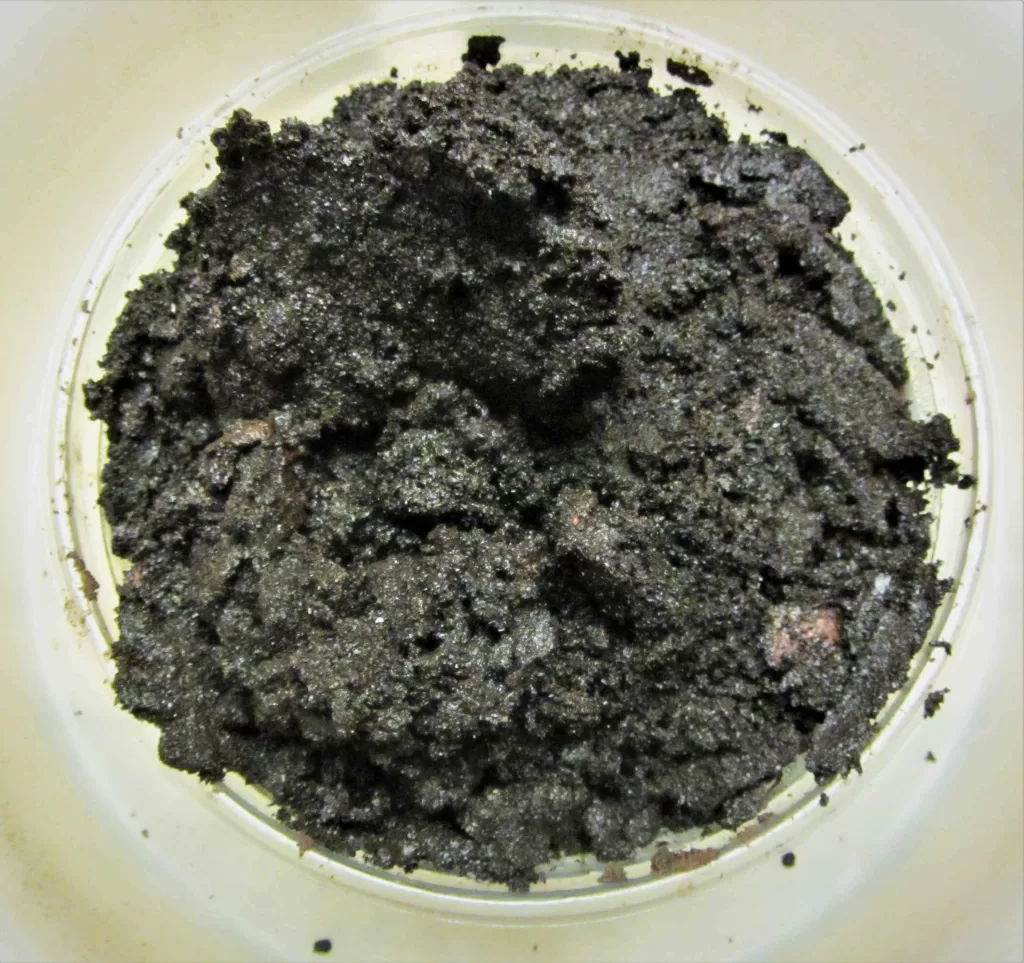Reduce, Re-Use, Recycle: Coffee Grounds
Nitrogen, Phosphorous, Potassium and More
That pile of wet grounds left from your fresh pot of coffee contains nitrogen, phosphorous, potassium, magnesium, calcium, and iron. Does that list of ingredients sound familiar? You may recognize this nutrient list from the last bag of fertilizer you read. Brewed coffee grounds, the dried and ground remains of the coffee bean, which is a seed, can be repurposed to enrich compost and improve soils. Grounds may contain up to 10% nitrogen, intended to support the growing coffee plant, even after the bean has been roasted, ground, and brewed.
We grew up pitching soggy coffee filters and used coffee grounds into the trash, without ever considering saving them for another use. All who brew our own coffee end up with quantities of grounds each week. Without a clear plan for how to save them and use them, we miss the opportunity to benefit from this useful resource.
Will Coffee Grounds Deter Deer?
I began regularly saving and re-purposing coffee grounds after reading somewhere that their odor deters deer. At that point, I was willing to try most anything I heard or read that might discourage deer from coming into our yard and grazing in our garden. If it is true that the smell of coffee grounds deters some deer somewhere, our deer here missed that memo. I haven’t noticed that they make much of a difference. That said, I still tend to use them, optimistically, most often along our property borders and around those plants that need some protection.
Making a Habit of It
Around the same time, I read about the many ways that coffee grounds improve the soil. They can encourage earthworm and other invertebrate activity to aerate and fertilize the soil. Saving our used coffee grounds and spreading them outside sounded like a winning plan. I formed a new habit and began to recycle all our coffee grounds.
I make a lot of coffee, usually a whole pot at a time. Some years ago, I upgraded to a coffee maker with a ‘reusable’ copper filter. When making coffee, I load fresh grounds directly into the mesh, metal filter, without a paper liner. But first, I need to clean up the remains of the previous pot of coffee. I scrape the wet, brewed grounds into a recycled plastic box with a tight-fitting lid. Then, I rinse the remaining grounds out of the filter, collecting that wastewater with additional grounds in a plastic pan. Any leftover coffee goes into the pan next, along with the water from rinsing the pot.

Water used to rinse the coffee filter and pot can be poured onto the soil as a liquid ‘fertilizer.’ This is too strong to use directly on plants in containers. Rather, pour it on the ground near shrubs, trees, perennials, or on ground you are preparing to plant in the future.
I am left with a plastic pan with diluted coffee and a few grounds to use immediately, and a box of wet grounds for later use. If you use paper filters in your coffee pot, those filters can be composted along with the spent grounds. Whether you save the filters and grounds together or separately depends on how you plan to use the grounds.
The Research is in on Coffee Grounds
According to a paper published by Washington State Extension, Using Coffee Grounds in Gardens and Landscapes, which is based on an earlier article by Dr. Linda Chalker-Scott, there are two main ways, supported by academic research, to recycle brewed coffee grounds. The first is to add used coffee grounds, and any paper filters, to an established compost pile. In this way the grounds and filters are mixed with other compostable materials and allowed to ‘cook’ into finished compost. Research suggests that coffee grounds be limited to no more than 20% of the pile. Beyond that suggested limit on proportion, any other acceptable materials, such as leaves, grass clippings, shredded paper, chipped wood, and other kitchen scraps, may be added to the compost pile.
The other suggested way to re-purpose coffee grounds is to spread them in a thin layer, about a half-inch or 1 cm thick, directly on the soil, and then cover them with several inches of another mulch material. This is a form of ‘sheet composting.’ It is always wise to have a soil test to determine whether nutrients are needed before adding any sort of fertilizer to a garden or lawn area. Excess nutrients can wash away into nearby waterways, but grounds covered by mulch will not wash away in a heavy rain.
Working with Earthworms to Improve the Soil
Coffee grounds have several qualities that make them useful as a mulch, but the most important quality is their appeal to earthworms. Earthworms will burrow up to the surface to eat the coffee grounds. They are later excreted below ground in the worm’s tunnel. This encourages soil aeration by the burrowing worms and allows the grounds to be moved into the deeper layers of soil naturally, without disturbing the soil manually by cultivation.

This is the contents of one box of coffee grounds, about 2-3 pounds, tossed near shrubs and a young oak tree. Coming rain will spread the grounds. I can water these in with the hose, cover them with mulch, or just wait for nature to absorb this contribution of organic matter.
Coffee grounds’ fine texture lends itself to compaction. Dried, compacted grounds could repel water. Many of the oils within the seed are hydrophobic and remain in the grounds during brewing. This is why Dr. Chalker-Scott recommends using a thin layer of grounds, which is then covered by a thicker layer of wood chip based mulch.
Weed Suppression and Other Benefits
Chemical substances within coffee grounds have been shown to inhibit seed germination and to some degree, root growth. This makes coffee grounds good at suppressing weeds, but a poor medium for seed starting or for use around young transplants. These growth-suppressing substances deteriorate when the grounds are composted.
Phytochemicals within coffee grounds can bind heavy metals and pesticide residue in the soil, and there is some research-based evidence that bacteria and fungi on the grounds can kill some pathogenic microbes. This may help to suppress some microbial plant diseases. These are good reasons to use coffee grounds in reclamation projects and in new areas intended for cultivation.
Soil pH Balance and Coffee Grounds
Materials I read some years ago suggested that coffee grounds are acidic, and so I have limited their use to areas where acid-loving trees and shrubs grow in our garden. Dr. Chalker-Scott’s work includes studies which show that coffee grounds may be slightly acidic, slightly alkaline, or neutral, depending on a variety of factors. Research shows that coffee grounds become more neutral as they age. The type of coffee bean, how it is roasted and brewed, and the age of the spent grounds can all affect the relative pH of the grounds.
There isn’t any published research, yet, which proves that coffee grounds deter deer, pets, slugs, or that they specifically attract earthworms. The remaining caffeine content could be harmful to pets if they eat the grounds in quantity. Using fresh grounds in vermicomposting boxes may concentrate their caffeine and other phytochemicals too much in a confined space for the health of the worms. There isn’t a body of research on this, yet, one way or the other.

This is all that remains of a box of coffee grounds, about 2-3 lbs., that was spread a week prior to this photo. Rain and other natural forces distributed the grounds.
Experiment to Discover What Works Best for You
Using coffee grounds in the garden remains an inexact science, which invites experimentation at home to see what methods work best in one’s own circumstances. Anyone who maintains an active compost pile can regularly add cooled grounds and used paper coffee filters, along with other ingredients.
Those of us who don’t maintain active compost piles can still find ways to use our spent grounds. I allow grounds to accumulate, in sealed plastic boxes, until I have 3-5 pounds of grounds to distribute. All but the most recent contributions are aged, if not properly composted, by the time I use them. I tend to toss them about under trees, shrubs, and ferns.
Since I thought coffee grounds were acidic, before learning about this recent research, I used them mainly under azaleas, Hydrangeas, Camellias, blueberries, dogwood, and Magnolia. Vinca and other ground covers grow in most of these areas already, and so I just tossed the grounds without considering adding a mulch on top. But I always timed these ‘distributions’ just before we expected heavy rain, expecting the rain to help dissipate the grounds and wash them off any ground covers.
The daily pan of diluted old coffee and fresh grounds has likewise been ‘tossed’ under and around shrubs or ferns. While I expect this brew would be too strong and chemically active to pour onto containerized plants, pouring it onto the ground under shrubs and trees hasn’t resulted in any problems for us. If there were a concern about the sensitivity of the plant to pH, then one could simply test the pH of the liquid with a pH test strip to make a more informed judgement.

Mophead Hydrangeas produce blue flowers in acidic soil, and the flowers turn to pink in alkaline soil. In more neutral soil, flowers may turn purple. The nitrogen in coffee grounds supports new Hydrangea growth in spring and early summer.
Coffee Grounds in Sheet Composting
One final approach for using the grounds is in sheet composting and raised-bed preparation. Raised beds may be constructed months before they are planted, especially if a variety of organic materials such as grass clippings, shredded leaves, eggshells, manure, hay, shredded paper, sticks, plant clippings, and coffee grounds or tea leaves are layered within the newly built bed. When this approach is used, it is usually wise to include some ‘topsoil,’ sand, or other mineral based soil along with the organic matter because as the organic matter decays, it will decrease in volume. This is called ‘sheet composting’ because the materials are added in layers, but it isn’t necessary to turn and mix the compost as it ages. Topsoil or finished compost is spread as the top layer.
A Summary of the Research
The research that Dr. Chalker-Scott cites indicates that coffee grounds won’t have a widespread affect on soil pH. Any changes are temporary, and in the vicinity of the grounds. As the grounds age, their caffeine content decreases, and their pH tends to become more neutral. ‘Watering-in’ the newly distributed grounds will further dilute their potency, decrease their depth, and spread them over a wider area. Their nitrogen, phosphorous, potassium, iron, and other nutrients remain available to enrich the soil and feed plants over a long time.
Coffee grounds have been recommended as a soil additive and potential critter repellent for quite a while, but most of the advice has been based on anecdotal experience rather than on research. While there are still fine points about their use left to be resolved, we have learned that coffee grounds have an overall positive effect on soils because of their dense nutrient content. Returning them to the soil is a far better use of this resource than sending them to a landfill. Aging and composting the grounds neutralizes some of their potentially harmful properties, like their ability to inhibit seed growth. Covering broadcast grounds with another mulch helps them to incorporate into the soil more quickly, without digging, while protecting pets who may want to taste them.
If you are a regular coffee drinker, you know how potent and useful coffee can be. A bit of reflection will reveal the best ways to recycle your own supply of coffee grounds and cold, leftover coffee, to nurture your own environment at home.

Improving the soil can happen continually for anyone with an active coffee habit. Some coffee shops will also donate their used grounds to those who will use them.
All photos by E. L. McCoy
For More Information:
Chalker-Scott, Linda. The Informed Gardener. University of Washington Press. 2008, 2013.
Chalker-Scott, Linda. The Informed Gardener Blooms Again. University of Washington Press. 2010.


